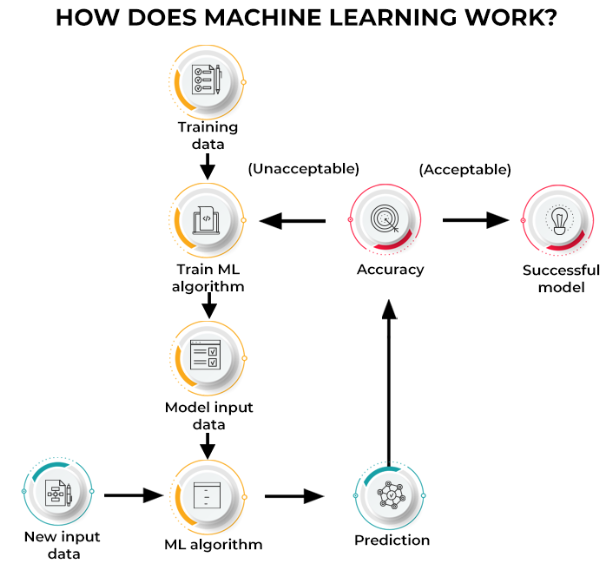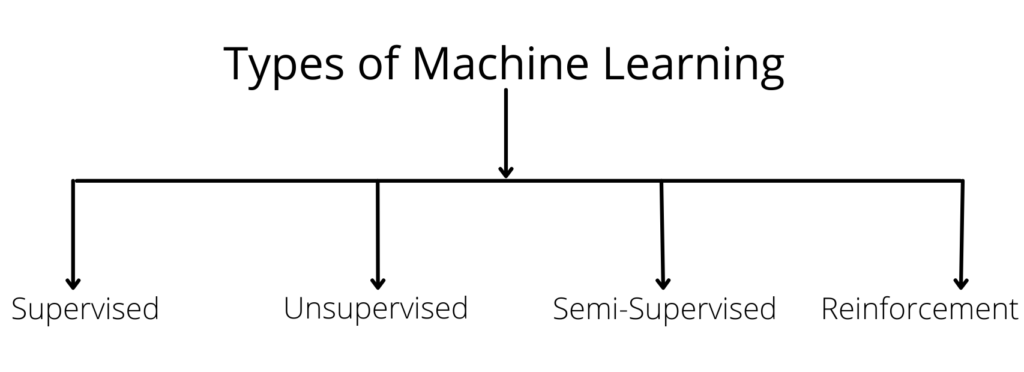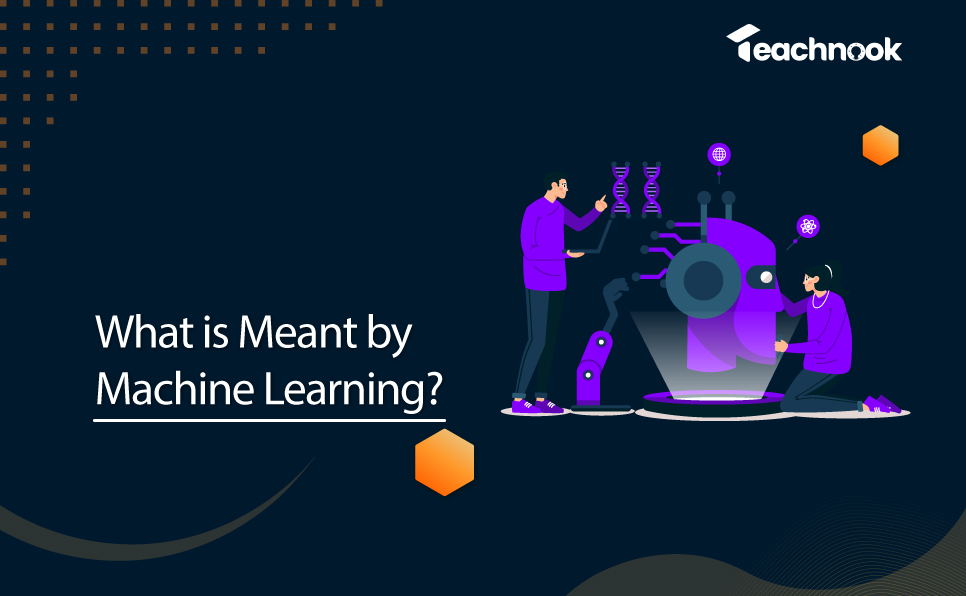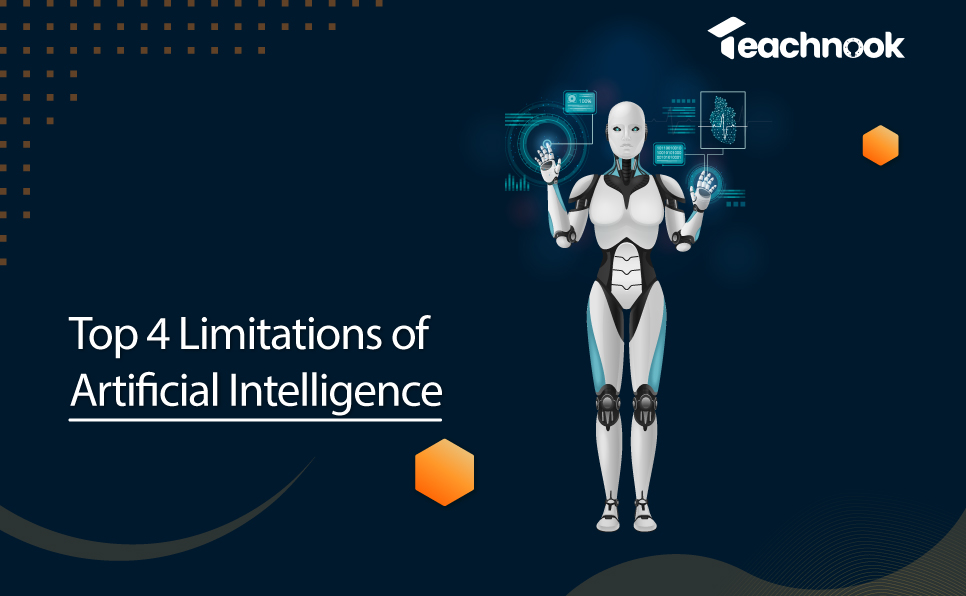Nowadays, we hear the heavy tech words of ML, AI, Deep Learning, and metaverse everywhere.
We feel pressured to know what they mean to avoid feeling left out from holistic interaction with these technologies.
We promise to bring you full coverage of all these terms one by one, but to avoid a mess in your understanding, in this blog, we’ll look at one topic of ML.
We will answer all the questions revolving around ML, like ‘What is Meant by Machine Learning?”, “Types of ML” and many more.
Key Takeaways
- Learn the Meaning of Machine Learning.
- Understand the Importance of Machine Learning.
- Know the Types of Machine Learning.
- Know the Future Scope of Machine Learning.
What is Meant by Machine Learning?
It is a technique of AI to develop algorithms where machines can access historical data, learn from it, and improve with more experience by creating patterns and related solutions without external programming for all these purposes.
The vision of ML is to achieve Human-like Intelligence, which is “A Wise Man Learns From their Experiences.”
So, how is it done?

Then, what consists of ML Systems?
They are composed of various algorithms which program the machine to learn autonomously.
Major Algorithms Involved in ML
Artificial Neural Networks
To mimic human intelligence, neural networks simulate the neurons in the human brain. The web of nodes in the NN, as a part of deep learning algorithms, gets activated only if the o/p at each node is higher than the activation function. The o/p of one node becomes the i/p of the next node, and so on.
Linear Regression
Used in the predictive analysis for continuous numbers having a linear relationship in a regression equation between the variables, e.g. salary, age, weights, etc.
Logistic Regression
In supervised learning, logistic regression predicts discrete or categorical values for classification problems.
Decision Trees
In supervised learning, it is used to solve classification and regression problems. It has a tree-like structure of nodes, branches, root nodes and decision nodes for problem-solving.
Random Forests
This supervised learning algorithm is also used for classification and regression problems for predictions using multiple decision trees as subsets. It improves the predictive accuracy of the algorithm.
K-Means Clustering
In unsupervised learning algorithms, it solves clustering problems. Based on similarities and dissimilarities, it groups the datasets into ‘K’ no. of different clusters and, by “means”, averages the datasets to find the centroid.
Importance of Machine Learning

The importance of machine learning can be marked from the following points:
- Data-driven decisions to get a competitive edge.
- Predicts future possibilities to get prepared in prior.
- Gives a view of customer behaviour and market trends.
- Gives insights into operational business patterns.
- Helps in the development of new and improved products.
For Example, in:
- AI robots like Sophia and Vyommitra.
- Self-driving cars like Tesla Model 3 and Audi A5.
- AI Virtual Assistants like Alexa and Siri.
- Recommendation Engines like Google and Instagram.
Types of Machine Learning

Supervised ML
Here well-structured data is taken as input, with some labelled data is fed with correct linked outputs as sample data. The labelled data are classified into Classification and Regression categories for the machine to predict correct solutions based on the experience.
Un-Supervised ML
Here the unstructured data is grouped together based on various patterns, similarities and dissimilarities. As no sample data is fed, the machine can find the Clusters and Associations among the unlabelled data.
Semi-Supervised ML
It takes the features of both supervised and unsupervised learning methods, i.e. It processes both labelled and unlabelled data, for example, in voice recognition, protein sequence classification, web content classification, and many more.
Reinforcement ML
It is a machine that improves by learning from its trial-and-error method by giving positive or negative feedback to its learning algorithms.
Future Scope of Machine Learning
Operational Management
Document management, supply chain management, manufacturing operations optimising, security standards compliance, and many more using Ai and ML.
For example: Companies like OptIq, Coupa, Epicor, Zebra Technologies, etc. use it.
Healthcare
ML is used today in finding cures for diseases like cancer, HIV, hepatitis, and so on. It also helps speed up drug trial processes, assists in complicated surgeries, and is a Virtual Healthcare assistant in hospitals.
For example: IBM Watson Oncology, Kaia Health, PathAI, etc.
Personalisation at Scale
To give customers the satisfaction of a personalised experience and thus more customer interaction and retention, search engines, social media, and entertainment platforms, retail platforms use ML
For example: Google, Instagram, Myntra, Netflix and so on.
Gaming Industry
ML is used in high-speed game development, more engaging realistic scenarios, dynamic audio-visuals, the design of complex and more immersive systems, personalised user content, and more.
For example: Atari/ALE. Minecraft, Stockfish, and many more.
Metaverse, Cryptocurrencies, Blockchain, NFTs, and more
Blockchain, metaverse, and NFTs are the future of ML in internet technologies, transforming the user experience from finance to advertising, business planning, governance, buying and selling, and so on.
For example: Companies like Meta, Roblox, Gucci, and Reebok have started using it now.
Conclusion
I hope you have got an overview of this topic. You can also join the ML Courses at Teachnook for deep understanding and first-hand experience in developing ML systems.
As promised, other topics related to AI will be covered in the upcoming blogs. Do comment to us below for what more topics you want us to discuss.
Also Read: Why Should I Choose Teachnook?
Frequently Asked Questions (FAQs)
What’s the difference between Machine Learning and AI?
Machine Learning is a sub-category of AI; the other categories are Computer Vision, Cognitive Computing, Natural Language Processing, Speech Recognition, Humanoid Robotics, and more.
What is the main advantage of Machine Learning?
The main advantage of Machine Learning is that it helps businesses in better and optimised decision-making, keeping all the worst and best-case scenarios in the picture.
What are the 7 stages of Machine Learning?
The 7 stages of ML are:
1. Data Gathering
2. Assessing Data
3. Data Preparation
4. Data Visualisation
5. ML Modelling
6. Training the Machine
7. Model Deployment
What is the highest salary for Machine learning?
Depending on the skills from beginner to advanced level, the salary of ML can range from ₹4LPA to ₹30LPA.




Hey very nice blog!
Useful Information. Thanks for sharing